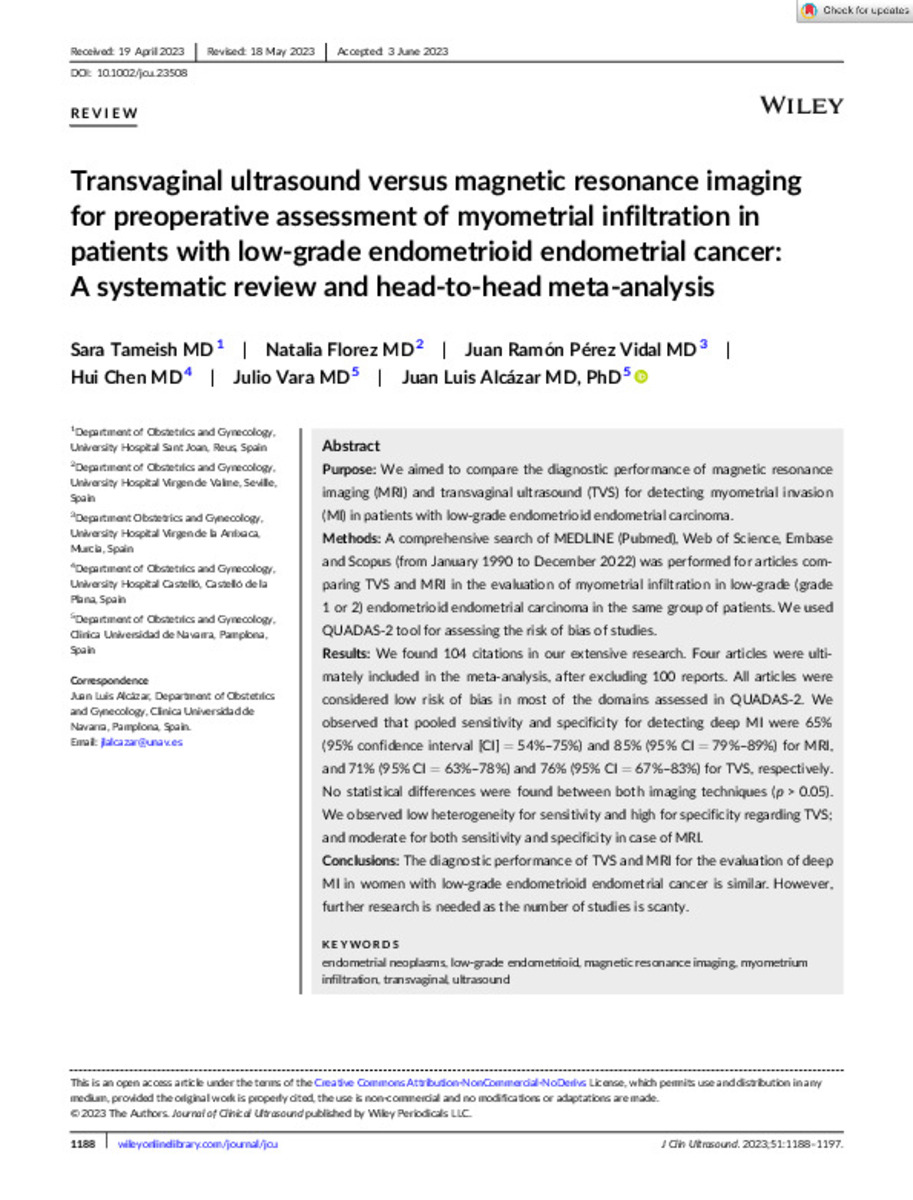Transvaginal ultrasound versus magnetic resonance imaging for preoperative assessment of myometrial infiltration in patients with low-grade endometrioid endometrial cancer: A systematic review and head-to-head meta-analysis
Keywords:
Endometrial neoplasms
Low-grade endometrioid
Magnetic resonance imaging
Myometrium infiltration,
Transvaginal
Ultrasound
Note:
This is an open access article under the terms of the Creative Commons Attribution-NonCommercial-NoDerivs License.
Citation:
Tameish, S. (Sara); Florez, N. (Natalia); Pérez-Vidal, J.R. (Juan Ramón); et al. "Transvaginal ultrasound versus magnetic resonance imaging for preoperative assessment of myometrial infiltration in patients with low-grade endometrioid endometrial cancer: A systematic review and head-to-head meta-analysis". Journal of Clinical Ultrasound. 51 (7), 2023, 1188 - 1197
Statistics and impact
0 citas en

0 citas en

Items in Dadun are protected by copyright, with all rights reserved, unless otherwise indicated.







